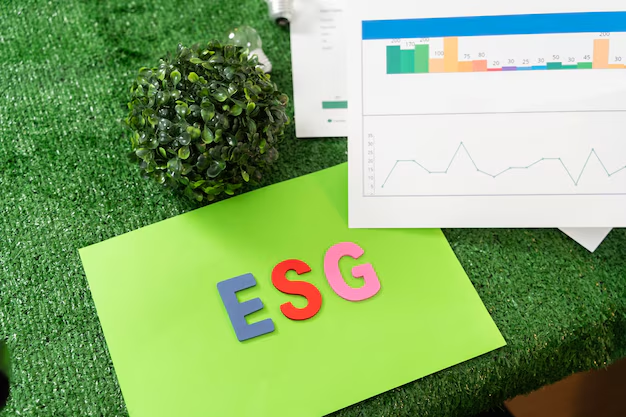The Future of ESG Ratings
Adapting to Evolving Market Needs

Environmental, Social, and Governance (ESG) ratings have become a cornerstone for investors, businesses, and policymakers navigating the increasingly complex landscape of sustainable development. ESG ratings provide a quantitative assessment of a company’s sustainability performance, influencing investment decisions, regulatory compliance, and stakeholder trust. However, the dynamic nature of global markets, coupled with evolving stakeholder expectations, has prompted significant changes in how ESG rating agencies operate. This blog explores the current challenges, trends, and innovations shaping the future of ESG ratings.
The Role of ESG Ratings in Modern Markets
ESG ratings act as a lens through which investors assess the sustainability and ethical practices of companies. These ratings help:
1. Investors: Identify risks and opportunities tied to sustainability issues.
2. Businesses: Benchmark their performance and align with global sustainability standards.
3. Regulators: Monitor compliance with environmental and social governance laws.
4. Consumers: Understand a company’s commitment to ethical practices.
As the demand for sustainable investments continues to grow, ESG ratings have become indispensable for integrating non-financial factors into decision-making processes. However, with their growing significance, several challenges have come to light.
Challenges Facing ESG Ratings
1. Lack of Standardization
ESG ratings often vary significantly between agencies, as they use different methodologies, metrics, and weightings to assess performance. This inconsistency can confuse investors and undermine confidence in the ratings.
2. Data Quality and Availability
The reliability of ESG ratings depends on accurate and comprehensive data. However, many companies lack robust reporting mechanisms, leading to gaps or inconsistencies in the data used for ratings.
3. Greenwashing Risks
Some companies manipulate ESG disclosures to appear more sustainable than they are, a practice known as greenwashing. This undermines the credibility of ESG ratings and the broader sustainability agenda.
4. Complex Supply Chains
Globalized supply chains complicate the task of assessing a company’s true ESG impact. Many rating systems struggle to capture indirect risks and externalities associated with supply chain operations.
5. Dynamic Market Needs
As market conditions and regulatory frameworks evolve, ESG ratings must adapt to reflect new priorities, such as biodiversity, human rights, and climate adaptation.
Emerging Trends in ESG Ratings

To address these challenges, ESG rating agencies are adopting innovative approaches and adapting their methodologies to align with market needs. Below are some key trends shaping the future of ESG ratings:
1. Focus on Data Transparency and Verification
Rating agencies are emphasizing the importance of transparent methodologies and third-party verification to enhance credibility. Companies are now expected to disclose detailed ESG data, supported by independent audits.
2. Integration of Technology
Technologies such as Artificial Intelligence (AI), Blockchain, and Big Data are revolutionizing ESG ratings. These tools enable real-time monitoring, automated data collection, and enhanced accuracy in assessing a company’s ESG performance.
1. AI and Machine Learning: Analyze large datasets to identify trends, predict risks, and generate actionable insights.
2. Blockchain: Ensures data integrity and traceability across complex supply chains.
3. Sector-Specific Frameworks
Recognizing the unique challenges and opportunities within different industries, rating agencies are developing sector-specific ESG frameworks. For instance, the financial sector may prioritize governance metrics, while the manufacturing sector focuses on emissions and resource efficiency.
4. Double Materiality Approach
The concept of double materiality, which considers both a company’s financial impact and its broader societal and environmental effects, is gaining traction. This approach ensures that ESG ratings capture a holistic view of sustainability.
5. Regulatory Alignment
Governments and international organizations are introducing standardized ESG disclosure frameworks, such as the European Union’s Corporate Sustainability Reporting Directive (CSRD) and the International Sustainability Standards Board (ISSB). Rating agencies are aligning their methodologies with these frameworks to ensure consistency and compliance.
6. Dynamic ESG Metrics
Rather than static assessments, ESG ratings are evolving into dynamic systems that account for a company’s progress over time. This shift enables a more nuanced understanding of a company’s commitment to improvement.
Innovations by ESG Rating Agencies
1. Real-Time ESG Monitoring
Rating agencies are leveraging IoT devices, satellite imagery, and social media analytics to provide real-time insights into a company’s ESG practices. This approach enables investors to respond quickly to emerging risks or opportunities.
2. Stakeholder-Inclusive Assessments
Some agencies are incorporating stakeholder feedback into their ratings, ensuring that the perspectives of employees, customers, and communities are reflected in the assessments.
3. Climate-Focused Ratings
With climate change at the forefront of global concerns, agencies are introducing specialized ratings that focus on carbon emissions, climate adaptation, and alignment with the Paris Agreement.
4. ESG Ratings for Small and Medium Enterprises (SMEs)
To democratize access to sustainable finance, agencies are developing tailored ESG rating models for SMEs, which often lack the resources for comprehensive reporting.
The Role of WOCE and esgpro.ai in Advancing ESG Ratings

At World of Circular Economy (WOCE), we are committed to helping businesses navigate the complexities of ESG ratings and achieve their sustainability goals. Our innovative platform, esgpro.ai, offers:
1. Real-Time Data Integration: Simplify ESG data collection and reporting with automated tools.
2. Customizable Dashboards: Monitor progress across key ESG metrics tailored to your industry.
3. Materiality Assessments: Identify and prioritize the ESG issues that matter most to your stakeholders.
4. Regulatory Compliance: Align with global ESG standards and reporting frameworks.
By leveraging advanced analytics and sector-specific insights, esgpro.ai empowers companies to enhance their ESG ratings and build trust with investors and stakeholders.
Conclusion
The future of ESG ratings lies in greater transparency, technological innovation, and alignment with dynamic market needs. As rating agencies refine their methodologies and integrate advanced tools, businesses must stay proactive in their ESG strategies to remain competitive. Platforms like esgpro.ai offer a pathway to navigate these complexities, ensuring that companies not only meet but exceed the expectations of investors, regulators, and society at large.
By embracing these advancements, the ESG rating ecosystem can drive meaningful change, fostering a more sustainable and equitable global economy.




